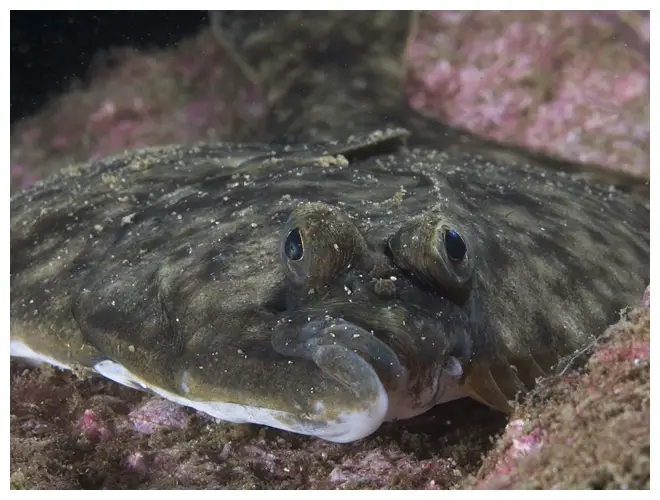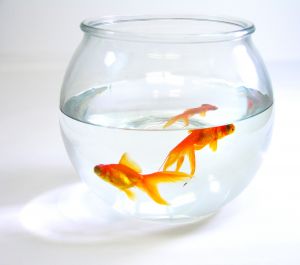European Flounder
The European Flounder is possibly one of the most common food fish. This fish has a flattened and disproportionate body. Although the Flounder is very well adapted to living in seas, it also spends a lot of time in freshwater. This species is widespread in the Scandinavian, middle European and Mediterranean seas, as well as river deltas and even some lakes.
The European Flounder is possibly one of the most adaptive European fish species. It’s notable that this fish can survive in both saltwater and freshwater. The Flounder isn’t a great swimmer, but it relies on flood tide to carry it into rivers, where there is plenty of food. This way, the Flounder often ventures to pure freshwater areas. When in water, fishes have to hold a balance between salt in their bodies and in the water – this why most saltwater fishes would die in freshwater. It’s not the case for the Flounder, as the fish can adapt to the surroundings, with the help of complicated chemical reactions.
The European Flounder can also be considered the chameleon of the sea. As the fish can’t swim too well, it spends most of the time waiting for a tide or an ebb, laying motionlessly at the bottom. This is why the Flounder has developed the ability to change their colour depending on the surroundings. Although it doesn’t happen too quickly – it can take up to 2 days to completely change the skin colour to blend in with the rocks or sand, it’s still amazing as the Flounder will try to adapt even if put on a chess board.
The Flounder has strong teeth, capable of shredding animals with the hardest of shells. The fish hunts on urchins, worms, crabs and other sea creatures that in large quantities can be found in the sea or river mud. When traveling deeper into rivers, Flounders also find newly hatched fish or caviar, all of which they eat along the way. A delicacy for this fish is definitely the young eel groups that can be found in river deltas.
Although the European Flounder can live and feed in both saltwater and freshwater, mating occurs only in the sea. Eggs are usually laid in the depth of 25-40 metres and up to 2 million eggs can be laid at a time. Newly hatched Flounders float near the surface of the water, feeding on plankton, and then measures a very long way in search of safer waters. In late spring, millions of these small fishes cover in the mud and as they look like tree leaves, they’re very hard to notice.
Even though it might seem that the Flounder is flat since birth, it isn’t so – they hatch as ordinary fish, but with time, one of the eyes moves to the side, until both are at the same level. A close-up view of the Flounder shows that the mouth is still in the “normal” position, so basically the fish isn’t flat, it’s just laying on one side, which is yet another adaption for life in the sea.




